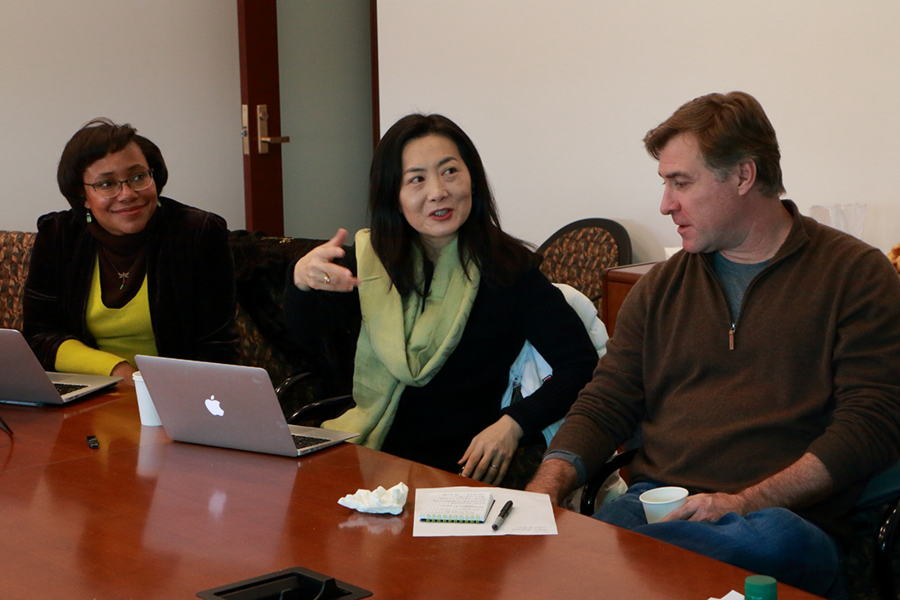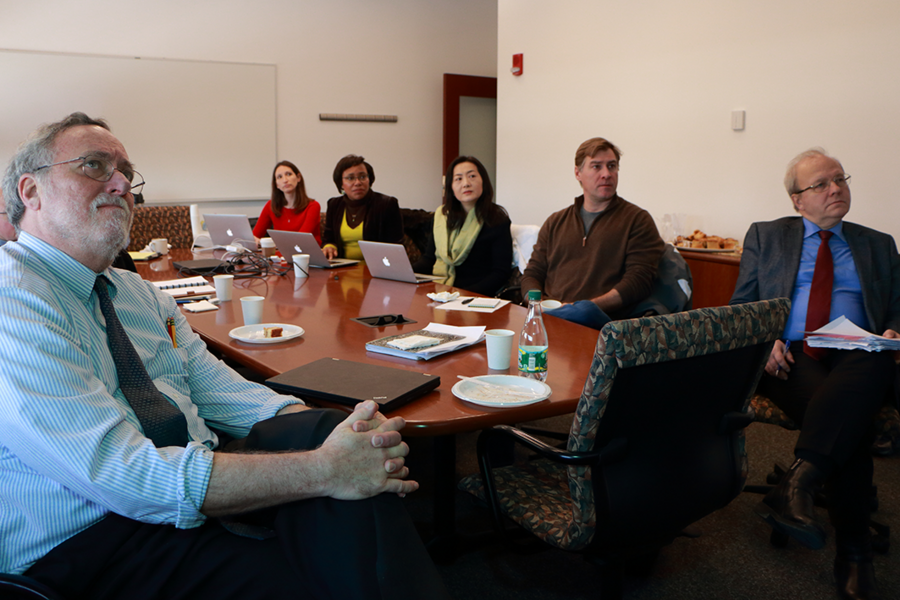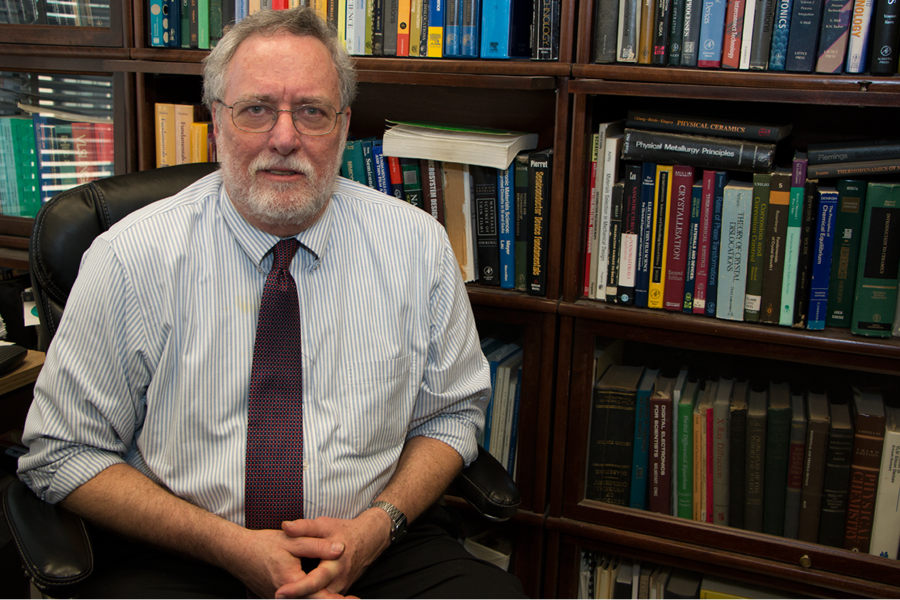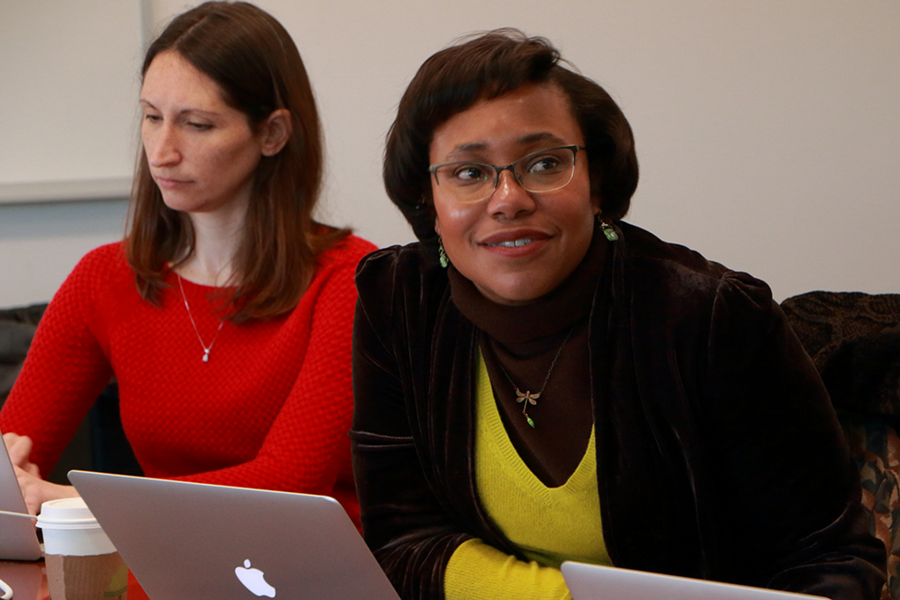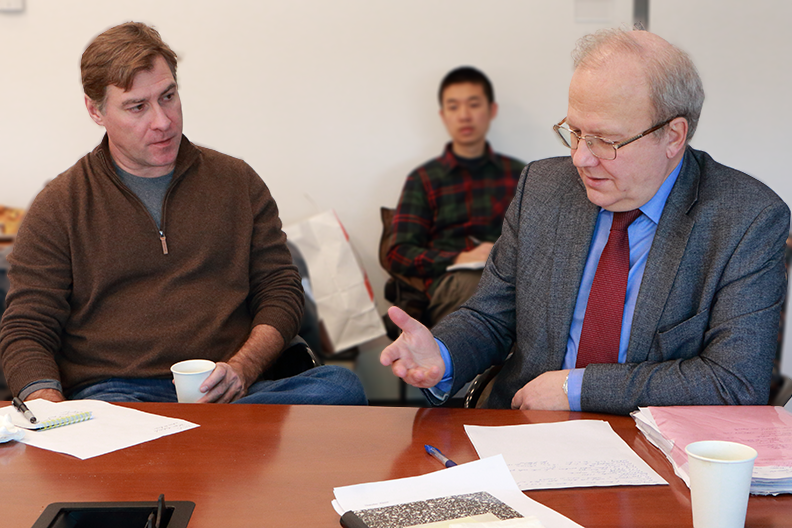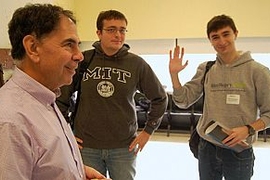Lithium ion batteries are popular for powering portable electronic devices but remain expensive for larger applications such as all-electric vehicles. "All the technology that wows us, all the portability that we have quickly gotten used to, is based on lithium ion batteries. There is an intense interest in still higher capacity batteries," says Carl V. Thompson, co-director of the Skoltech Center for Electrochemical Energy Storage (CEES).
Research into lithium ion batteries is a key area for CEES, which is a partnership between the MIT Materials Processing Center and Lomonosov Moscow State University. CEES is a Center for Research, Education and Innovation (CREI) under the umbrella of the Skolkovo Institute of Science and Technology (Skoltech).
"It's a great team and we're making rapid progress. We've got some good collaborations going on. Things are up and running at Skoltech, and we're enthusiastic about the future," Thompson says.
CEES has three main research thrusts:
• advanced lithium ion and multivalent ion batteries, led by Yet-Ming Chiang, the Kyocera Professor Department of Materials Science and Engineering at MIT, and Evgeny Antipov, professor and electrochemistry chair at Moscow State;
• rechargeable metal-air batteries, led by MIT Professor Yang Shao-Horn and Evgeny Goodilin, professor and deputy dean of materials science at Moscow State; and
• reversible fuel-electrolysis cells, led by Harry Tuller, professor of ceramics and electronic materials at MIT, and Evgeny Antipov at Moscow State.
Interdisciplinary groups
Research in electrochemical energy storage is highly interdisciplinary. Key scientific issues involve the chemistry of the electrolyte and electrodes, their interactions, and the structure and surface properties of these materials. "It's right at the intersection of physics, chemistry, materials and engineering," Thompson explains.
Altogether, eight MIT faculty members and eight Moscow State University faculty members are engaged in CEES-related research. "Within MIT, there are people from materials engineering, mechanical engineering, chemical engineering and chemistry," says Thompson, who is the Stavros Salapatas Professor of Materials Science and Engineering at MIT as well as director of the Materials Processing Center. Thompson previously served from 2000 to 2014 as co-chair of the MIT Singapore Alliance's Program in Advanced Materials for Micro- and Nano-Systems.
Director Keith J. Stevenson joined CEES in Moscow from the University of Texas at Austin, where he served as professor of chemistry. "He's an outstanding scientist," Thompson says.
Raising energy storage density
Chiang, MIT colleague W. Craig Carter, with their associates, published a study on March 4 in Advanced Energy Materials showing use of aluminum ions as an energy-storage mechanism in a capacitor. Aluminum is more abundant and less costly than lithium.
The aluminum ion research fits into a quest to find battery materials that pack higher charge density than lithium. The advantage of aluminum is that it carries three charges per ion compared with lithium, which carries just one. This allows storage of charge at a higher volumetric or gravimetric density, which translates to a higher stored energy density or storage capacity for a given size or weight. Other work focuses on sodium as an earth-abundant alternative to lithium, but while it could lower cost, sodium ions also carry just a single charge.
The metal-air thrust is examining whether a metal-air battery that stores lithium in the form of its oxide, lithium peroxide (Li2O2), with potential for greatly enhanced energy storage density, can be made to function reversibly. "If you have a chunk of lithium peroxide, half of the atoms are lithium. That's a very high storage density," Thompson explains. "The ideal is to have a metal air battery that is reversible, that can cycle back and forth, discharge and recharge."
Storing intermittent energy
High-temperature solid-oxide fuel cells and solid-oxide electrolysis cells have potential over the intermediate term to double energy efficiency from fossil fuels and reduce greenhouse gas emissions as well as over the long-term to enable the shift to renewable energy sources such as solar and wind. The solid oxide fuel cell-electrolysis thrust aims to optimize conversion efficiency between chemical and electrical energy, lower operating temperatures to increase the lifetime of these devices, and bring down costs.
The project is examining how to combine electrolysis, or electrochemical water splitting, with a fuel-cell-like design. "You can split water to make hydrogen and then use the fuel cell to convert the hydrogen into electrical energy. You store the energy by storing the hydrogen. It becomes an energy storage system when you couple electrolysis and fuel cells," Thompson says.
"We need a way of producing alternative cleaner fuels, minimizing use of hydrocarbons, or at a minimum recycling the carbon dioxide to form these more useful fuels. High-temperature systems really offer a number of advantages in terms of actually being able to do that, particularly decomposing carbon dioxide, but also doing so with less costly materials and more efficiently," fuel cell thrust leader Tuller says. Using fuel cells to convert hydrocarbon fuels directly to electricity could double extraction efficiency, from about 30 percent to about 70 percent, while at the same time cutting carbon dioxide (CO2) emissions by half.
Because solar and wind energy are intermittent, producing energy only when the sun shines or the wind blows, a method to capture and store energy for later use is needed. Fuel cells, coupled with electrochemical electrolysis, have potential to serve that role. One way is to generate hydrogen by splitting water and storing the hydrogen. "The challenge with hydrogen is that while it has a high energy density on a weight basis, it has a very low energy density based on a volume basis, and the infrastructure that we now have is not particularly designed to transmit that hydrogen over long distances. So ideally what you'd prefer is something that more closely resembles conventional fuels," Tuller explains.
"If we could take CO2 which is now problematic, and use some sort of technique to decompose CO2 back into, for example, carbon monoxide [CO], then there are a variety of different ways in which you can react hydrogen and the CO to produce gaseous fuels like methane or liquid hydrocarbon fuels," he says. "The big advantage there is if you can convert that back into synthetic gas, which resembles natural gas, or a liquid fuel, like gasoline, then we have this enormous infrastructure already available nationwide and world-wide where we can store it, transmit it and use it in many different ways, including for transportation. We can use it in vehicles, we can use it in aircraft, and so forth," he says.
Understanding Degradation
Electrolyzers operating in the 100-degrees Celsius range, such as polymer electrolyte-based cells, can split water, but they can't very efficiently decompose CO2, Tuller says. Likewise polymer electrolyte membrane (PEM) fuel cells operate only with H2 as the fuel and only then with platinum electrodes. Solid-oxide-based cells operating at high temperature are more efficient and can operate with lower-cost metal oxide catalysts versus more expensive platinum. But the solid-oxide materials are more difficult to fabricate, which increases cost, and higher temperatures accelerate certain reactions that shorten operating life.
"We're looking to try to understand in more detail what are the sources of degradation and what are the factors which limit performance at lower temperatures," Tuller explains. The researchers are creating model systems for fuel cell structures to do a better job of isolating factors that contribute to performance and investigating novel materials with promising features in terms of both endurance and performance.
In particular, the researchers are looking at modifying the morphology, or physical structure, of the electrode materials, to enhance transport of gas molecules through their pores, flow of ions and electrons through the solid part of the electrode, and catalytic activity at the electrode interface.
Translating entrepreneurship
A patent disclosure related to the electrode material morphology work is expected in the next month or so, Tuller says. One of the explicit objectives of the Skoltech program is to create new technology and perhaps spinoff companies, he notes. "MIT is noted for its entrepreneurship and they want to get a better sense of how this is done and how do we translate that into something similar in the Russian environment," Tuller says.
A Feb. 5 report in the Journal of Physical Chemistry by Shao-Horn and colleagues at MIT, Oak Ridge National Laboratory, and the University of Wisconsin at Madison examined the role of tensile strain and electronic conductivity in oxide materials for oxygen electrocatalysis, focusing on the catalytic activity of LaCoO3 (LCO) thin films. The study uncovered an unequal influence of charge-transfer resistance, with a greater influence on the oxygen-reduction reaction and a lesser influence on the oxygen-evolution reaction. The new understanding can help incorporate the effects of strain to guide the design of highly active catalysts, the researchers say.
A different collaboration between Shao-Horn and researchers at SLAC National Accelerator Laboratory and the Advanced Light Source further explored new methods for studying the influence of chemistry on oxide electronic properties in a paper published in the Journal of Physical Chemistry C. Combining techniques from synchrotron X-ray spectroscopy, they developed a method for studying trends in the energy of electronic states on an absolute scale. Insights from this approach can shed light on the catalytic properties of oxides for fuel cells, electrolyzers, and artificial photosynthesis.
Student, faculty visits
Skoltech MIT Center for Electrochemical Energy Storage got started in October 2013 and completed its first full year in 2014. So far, just a small number of students from Skoltech have come to MIT, usually first-year master's degree students, but Thompson anticipates that over time more master's and PhD students will be doing research at MIT. "We have had short-time visitors at the post doc and research staff level from Moscow State and that will be happening all the time. The presumption is some of our students will spend time at Moscow State and Skoltech as it comes on line," he says. As collaborations deepen between Skoltech and MIT researchers, among both faculty and students, communications grow and group members will spend more time with each other.
Visits to MIT by Skoltech CEES Director Keith Stevenson and Moscow State University faculty have yielded insights into different materials that operate better at much lower temperatures for different applications and optimizing material properties by manipulating complex crystal chemistries, Tuller says.
CEES also has a Russian co-director, Alexei Khokhlov, who is professor and head of polymer physics as well as vice-rector at Moscow State University. He leads the research team at Moscow State. MIT CEES Assistant Director Jack Kosek is responsible for budgeting, reporting, and managing timetables.
The Skoltech-MIT CEES partnership is expected to run for five years. CEES is part of the larger Skoltech effort to create a Silicon Valley-like innovation hub in Russia by pairing the fledging graduate-level institute with an industrial and commercial park setting. The Russian economy is heavily dependent on selling carbon-based fossil fuels, principally oil and gas. "For Russia to have economic stability and balanced relationships with other nations, it's important for its economy to become more diverse and more broadly integrated with the rest of the world," Thompson says.
